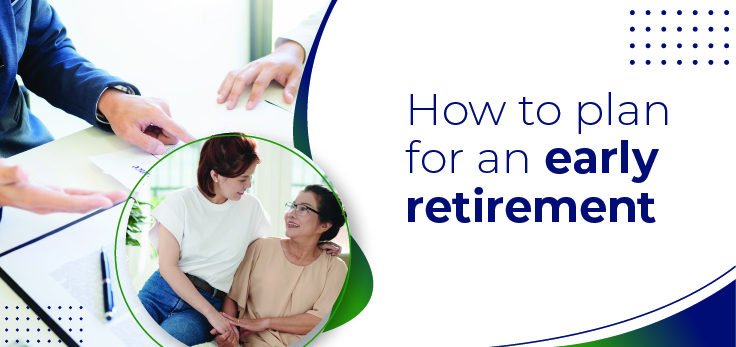Retirement is something everybody dreams of but seldom do people plan for it. Retirement goals are something we all set for ourselves, early on in our lives or later on when we are progressing in our careers. However, planning an early retirement can be a bit complicated and isn’t nearly as simple as enrolling in an Australian State Pension plan. The typical retirement age is roughly 60-65 years old. Early retirement would be a decade or two decades earlier than the ideal age. To retire at 40 or 45 would take a lot of prior financial planning, saving, investing, and portfolio management.
Before we discuss the risks and complications when it comes to early retirement, let us get familiar with a few financial terms.
1. Inflation
A reduction in the purchasing power of money with each passing year. Inflation is basically the depletion of the value of money against goods and services. Basically, as we move through time, goods and services get more expensive and the currency value shrinks in comparison. Inflation can be calculated over a period of time in a compounding manner. The most common way to calculate inflation is annual. However, we must account for the fact that inflation is happening constantly.
2. Adjusted Spending
Adjusted spending equals spending after accounting for the outflow of money. Adjusted spending can vary depending on the age group of the person. For a person who seeks early retirement, adjusted spending is the money they can spend after they have paid their deductions for savings and investment as well as for their state pension plans.3. Long-term Investment
Money that is invested over a long period of time, generally has low risk and accrues value over a long period of time.
Planning for Early Retirement
There is great confusion when it comes to retiring early. When we think of retirement, we are thinking only about a fund that would last us for two or three decades. But since we are retiring early, we do not know exactly how long our life span is going to be. Where this becomes a concern is that, for normal retirement planning, people invest for the long term and in low-risk funds.
However, for early retirement, one must build a portfolio that is more equity-focused and has more risk because there is lesser time to acquire capital which has to be spent over a much longer period of time. Think of it like this, if you start saving money for retirement at 25, and want to retire at 65, you have 40 years to accumulate money. Having that much time means you can invest small amounts of money over a longer period of time - which would allow your money to grow over a long period of time. In early retirement, it is actually reverse. Even though you want to save enough money to retire at 45, you would have to save large amounts of money over a period of 20 years. This time period is considerably shorter than the first one - exactly half. This means a major part of the portfolio would have to be invested in equity funds which means taking the higher risks to aim for higher rewards. The person aspiring for retirement at an early age would need to strategize their portfolio and change it over a period of time. It is not necessary that a higher risk-oriented portfolio would necessarily succeed. The spending part of a retirement fund is always harder, but we will get to that shortly.
The most important part of diversifying an early retirement portfolio is that it needs to be shifted and altered according to which phase of life you are currently in. If you have two decades to save for retirement, you would want to divide that into multiple phases of balanced risk and long-term investment plans. Hiring a financial expert can always help with this kind of retirement plan.
Spending after early retirement
Now we come to the harder part of early retirement - spending. Even spending needs to be strategized and planned now that you have saved up your retirement fund. Since we do not know our life span, we have to plan with a balanced approach. Assuming we retire at 45, we would assume we have at least 3-4 decades of life left. With 30 or 40 years left, we must account for inflation as well as account for the cost of keeping up our lifestyle to find a balanced amount which we can spend every year. The ideal number would be roughly 3 to 3.5% of our retirement fund. If we retire at 45, we can spend 3 to 3.5% of our retirement portfolio each year, so that we never fall short of money in the later years of retirement.
We are here for all your financial needs
Early retirement needs thorough guidance and expert financial advice. We at Fastgrow Finance are glad to provide you with any financial assistance and advice that you may need. We are connected with the leading banks in Australia and can facilitate various loan and mortgage facilities. Contact us now!
Contact us through the following channels:
- Phone: (02) 9630 3142
- Email: [email protected]

